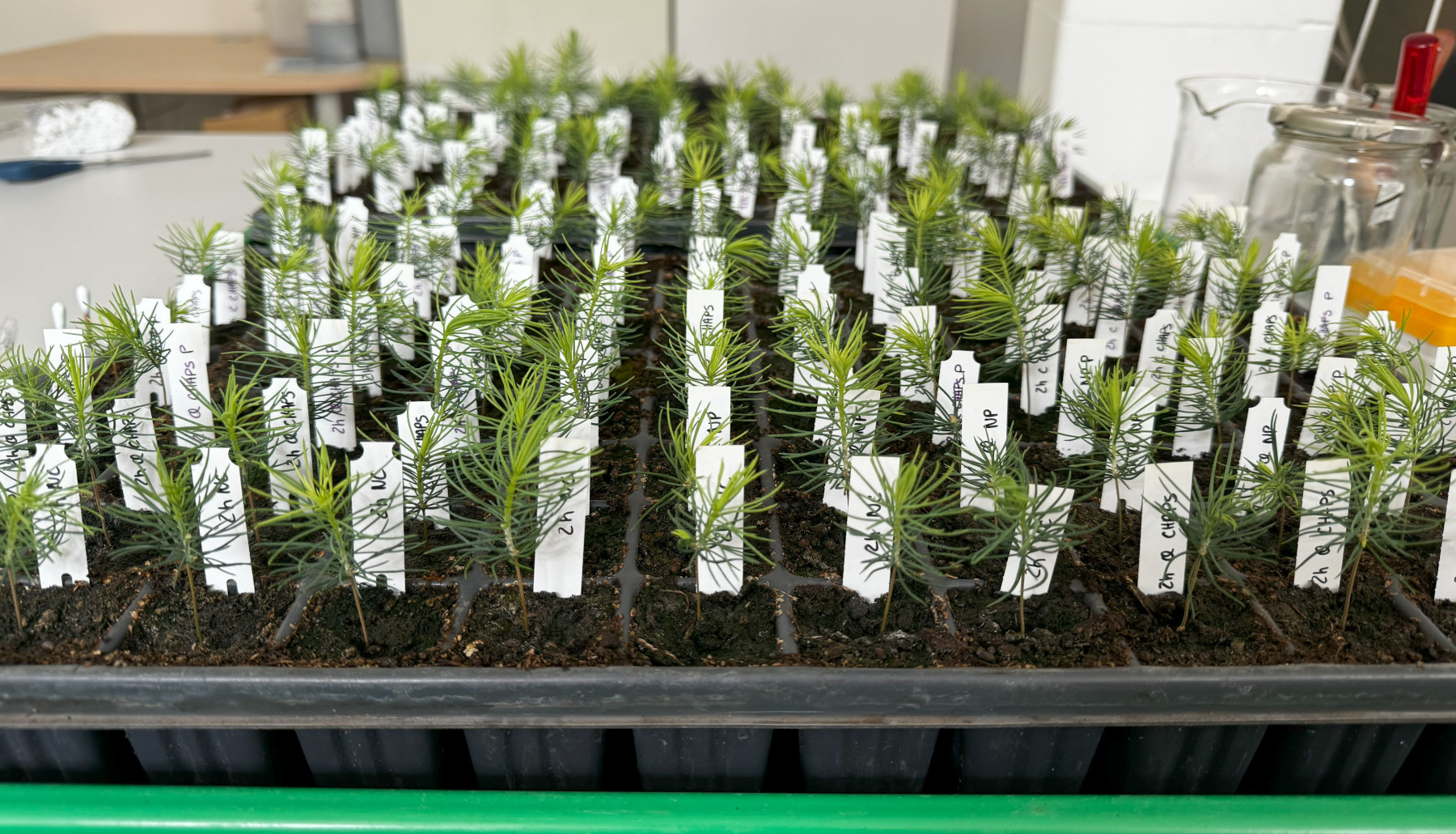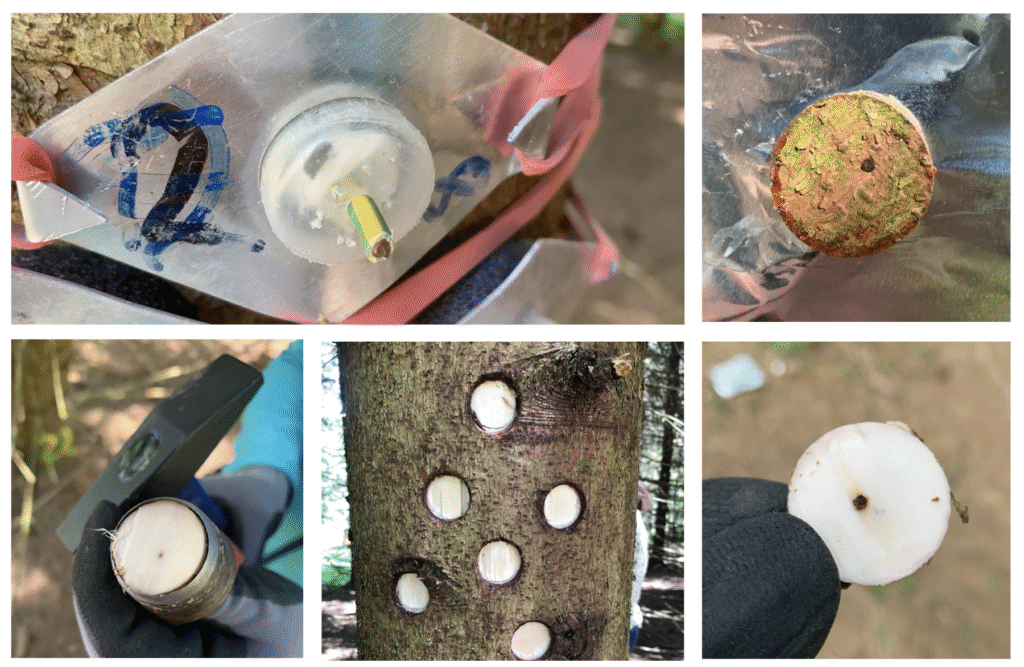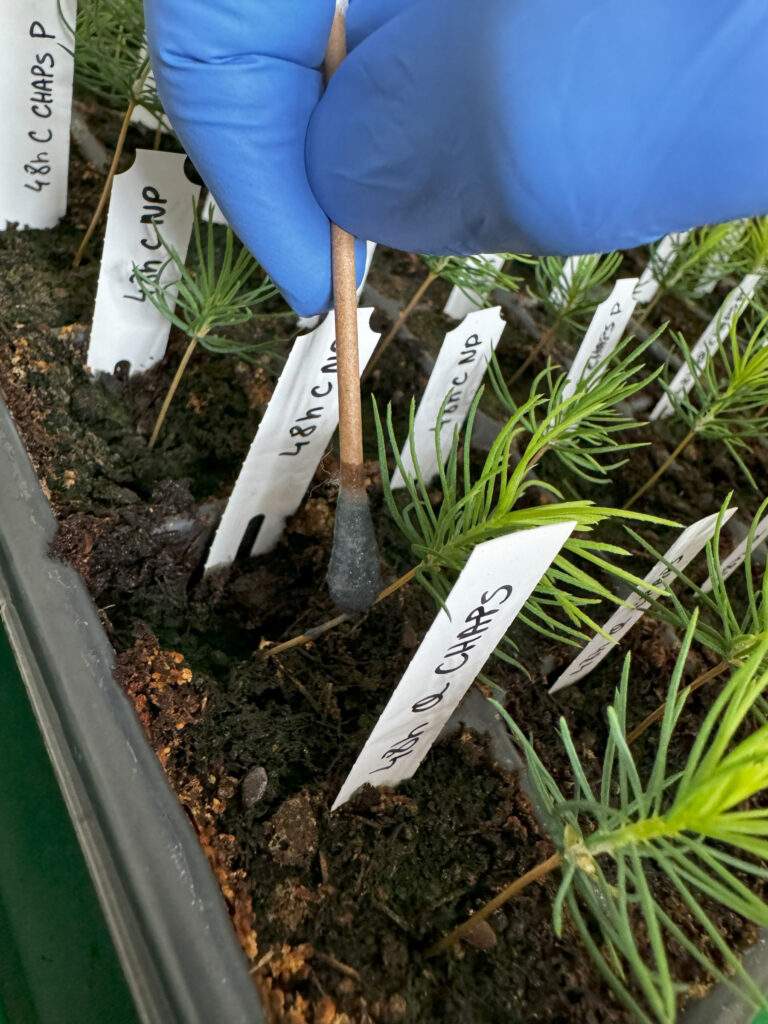How the Norway Spruce Defends Itself at the Molecular Level

The research project FICHTETRON investigates how the Norway spruce (Picea abies) responds on a molecular level to the bark beetle species (Ips typographus) . The aim is to develop a standardized method for analyzing plant defense mechanisms under controlled conditions.
Climate change is increasing pressure on native forests —especially through mass outbreaks of insects like the bark beetle (Ips typographus). The FICHTETRON project, led by Carlos Trujillo-Moya, addresses this issue directly: the goal is to understand how the spruce (Picea abies) responds to such biotic stress factors on a molecular level in order to contribute to the long-term development of more resilient forest stands.

Photo: C. Trujillo-Moya/BFW
“The defense responses we’ve observed in our phytotron experiments and field trials provide a solid basis for in-depth molecular studies. This comparison also opens the door to analyzing different seed sources, allowing us to identify variations in defense mechanisms and ultimately contribute to the breeding of more resistant spruce populations,”
says project leader Carlos Trujillo-Moya.
At the core of the project is an experimental setup established in a phytotron, where plants are treated with specific elicitors—such as protein extracts from bark beetles—under controlled environmental conditions. The molecular responses triggered in this way are then analyzed using genetic and biochemical methods. This approach enables targeted and reproducible investigation of plant defense mechanisms.
„Where it occurs naturally, the Norway spruce plays a vital role in Austrian forests. Protecting it against bark beetles is crucial not only for maintaining timber resources, but also for the stability of ecosystems and protective forests. A deeper understanding of its molecular defense mechanisms is therefore essential for future breeding and forest protection strategies,”
summarizes Peter Mayer, Director of the Federal Research Centre for Forests (BFW).

Photo: C. Trujillo-Moya/BFW
Project Collaboration
FICHTETRON is an interdisciplinary cooperation project coordinated by the Federal Research Centre for Forests (BFW). Project partners include the University of Natural Resources and Life Sciences, Vienna (BOKU), the University of Veterinary Medicine, Vienna (Vetmeduni), and the University of Innsbruck. The project is funded by the Forest-Wood-Paper (FHP) cooperation platform and the Austrian Federal Forests (ÖBf AG).
Initial findings from the project were recently presented at the 8th IUFRO Workshop on Resistance Mechanisms & Breeding in Forest Trees in Vernon, British Columbia. Marcelo Ramires, a postdoctoral researcher on the project team, received the Best Postdoc Poster Award for his poster presentation. In addition, project leader Carlos Trujillo-Moya gave a talk highlighting key findings on the activation of genetic defense pathways in spruce.
Media contact: Marianne Schreck,
marianne.schreck@bfw.gv.at, 0664/961 52 40